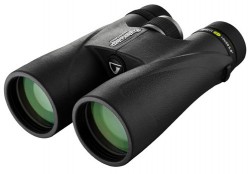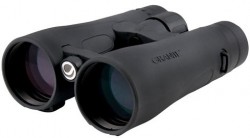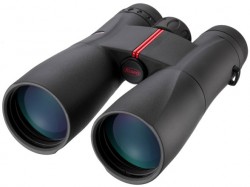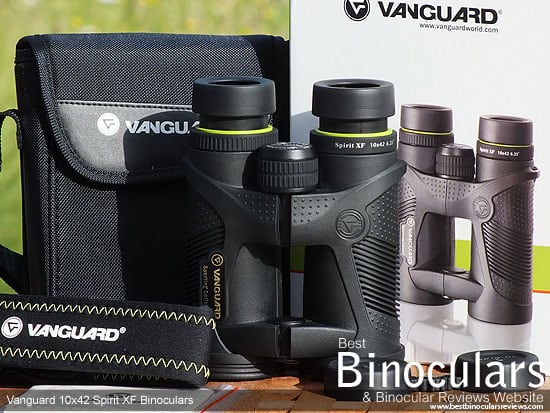10x50 Binoculars & Optical Components Quality
This week I am highlighting a series of questions recently sent into me on Facebook and which I thought would be of enough interest to publish:
 Question 1:
Question 1:
Many thanks for your binocular review website ! Am finding it a great help in reducing the number of binoculars I should seriously consider in different price points.
One is the Vanguard 10x42 Spirit XF Binoculars. Your review of which was excellent like all the ones I’ve read. I have a question though regarding this particular review. The rating you gave for Optical components Quality was only 6/10 which surprised me considering what you had written about the optics seemed all favourable.
Would you clarify why you only gave 6/10 please ? Do you only reserve the 8+/10 rating for your 5 or 6/6 price point binoculars ?
Answer 1
The optics components rating has nothing to do with the price point, rather the quality and number of the glass and the coatings used.
So a roof prism binocular that is Fully-Multi Coated, has ED glass lens elements and uses prisms made from BaK-4 glass that has been Phase Coated and coated with the very best Dielectric coatings, would get around 9/10 (depending on a few other factors).
The Vanguard Spirit XF is Fully Multi-Coated, but does not use ED glass in the lenses and whilst the prisms are made from BaK-4 glass, they are not Phase Corrected. These Vanguard binoculars will also have a highly reflective coating like silver or aluminium, but these are not quite as good as the much more expensive dielectric coatings found on higher spec bins.
Having said this, what is important to keep in mind is that the use of ED glass for example does not guarantee a better image than a binocular that does not use it. ED glass merely gives the optical designer more flexibility when trying to better direct the light. This is why I also have a rating for Image Quality, because as with the Spirit XF, I quite often find bins that optically outperform what their actual components and coatings may suggest.
I hope this answers your question – please let me know if you need any further help.
 Question 2:
Question 2:
Many thanks for your very informative answer ! It has answered my question and more
It was such an informative answer I feel somewhat greedy in asking for some purchasing advice but I will anyway.
I couldn’t believe my luck when I came across your article on wide field 10x42 binoculars since this was my primary search area for new binoculars. Having already purchased a compact binocular (Olympus 8x25 WPII which I’m happy with) I’m now considering buying a larger binocular primarily for viewing birds and larger wildlife as well as landscape.
I’m considering various price points within £100 ($100) to £400 ($400) (at the very most).
After reading your wide field 10x42 article I wondered that if weight was potentially less of an issue (being 6′ 7” tall with large hands and currently weight training ) that I could consider wide field 10x50 (or similar spec.) binoculars instead since they would also serve the dual purpose of night sky observing as well (and being potentially even better for low light terrestrial viewing with a larger exit pupil).
Is this sensible ? I would much prefer to only consider roof prism designed binoculars with minimum 10x magnification. I hope this is not too much of a restriction on potential choices ?
If it is sensible I would welcome and appreciate some recommendations ?
Answer 2
Yes in theory you idea makes perfect sense, but just keep in mind that it is much harder to keep still and more tiring to hold a binocular upwards towards the stars than level.
For example, I can even just about hand hold the Celestron SkyMaster 25x70 bins steady enough to get a decent terrestrial view. But at night, not only is it too tiring to hold them above and looking up, but it is impossible to keep them still enough to get a shake free image of the stars, moon etc. However should you get a 10x50 and if this is a problem you could always attach them to a tripod using an adapter.
Recommended 10x50’s
As for recommendations, I have not really reviewed any 10x50’s as they are not all that common, so I can’t really speak from experience. Also finding them within your budget is quite difficult as being so specialised, there is not a huge choice. But I have found a few and listed the ones below that to me look like they will be more than decent and serve your purposes nicely:
Vanguard Spirit ED 10x50 Binoculars
 Whilst I have not reviewed this model, I have reviewed many other Vanguard binoculars including the similar 10x42 Spirit ED, which will give me a decent idea of their quality and performance. They won my award for the Best Value For Money Binocular in 2011 as in my opinion they well outperformed their price tag. So I would assume that these too should continue along those lines.
Whilst I have not reviewed this model, I have reviewed many other Vanguard binoculars including the similar 10x42 Spirit ED, which will give me a decent idea of their quality and performance. They won my award for the Best Value For Money Binocular in 2011 as in my opinion they well outperformed their price tag. So I would assume that these too should continue along those lines.
Main Highlights:
- Extra-low Dispersion (ED) Glass
- Fully Multi-coated
- Phase Correction Coatings on the BaK-4 Roof Prisms
- Tripod Adaptable – should you need it
- Water & Fogproof
- Field of View: 293 feet wide @ 1000 yards
- Eye Relief: 19 mm
- Close Focus: 3.0 feet
- Weight: 29.8 oz
Cost & Where to Buy
In the US, I spotted these on for around $350 at a number of retailers and in the UK they cost around £290 (see link below), which considering all their good components looks to be a very good deal:
Celestron Granite ED 10x50 Binocular
 Here is another binocular that whilst I have not reviewed the actual model, I have reviewed a couple in the same series – see my Celestron 8x42 Granite and Celestron Granite 9x33 reviews, both were excellent and so I feel fairly comfortable about rec commending it to you.
Here is another binocular that whilst I have not reviewed the actual model, I have reviewed a couple in the same series – see my Celestron 8x42 Granite and Celestron Granite 9x33 reviews, both were excellent and so I feel fairly comfortable about rec commending it to you.
These Celestron binoculars have very similar features and stats to the Vanguard’s above, although these do have a magnesium open bridge body (but are heavier!) and a wider FOV. But they are quite a bit more expensive and have less eye-relief:
Main Highlights:
- ED (Extra-low Dispersion Glass
- Fully Multi-coated
- Phase Correction Coatings on the BaK-4 Roof Prisms
- Tripod Adaptable – should you need it
- Magnesium Open Bridge Body
- Water & Fogproof
- Field of View: 342 feet wide @ 1000 yards
- Eye Relief: 17 mm
- Close Focus: 9.8 feet
- Weight: 30.4 oz
Cost & Where to Buy
For sale at approx $440 in the US, whilst in the UK I have seen them at about £435 (see link below):
Kowa SV 10x50 Binoculars
 Once again this Kowa binocular is not one that I have actually tested or written a review on, but I have fully reviewed two others in this series, the Kowa 8x32 SV and the even more similar Kowa 10x42 SV.
Once again this Kowa binocular is not one that I have actually tested or written a review on, but I have fully reviewed two others in this series, the Kowa 8x32 SV and the even more similar Kowa 10x42 SV.
Both did very well in relation to their price point and so once again, I feel that these could be an option for you. Whilst they are the cheapest of the three I have listed, they don’t come with ED Glass and they have the narrowest view, but still have a number of other features that make them worth considering:
Main Highlights:
- Fully Multi-coated
- Phase Correction Coatings on the BaK-4 Roof Prisms
- Tripod Adaptable – should you need it
- Water & Fogproof
- Field of View: 261 feet wide @ 1000 yards
- Eye Relief: 19.5 mm
- Close Focus: 18 feet
- Weight: 26.1 oz
Cost & Where to Buy
In the US, these currently cost around $280 and in the UK they are available for approx £280 (see link below):
Further Reading:
- Best 10x50 Binoculars for Astronomy
- 10x42 Binoculars for Bird Watching
- Wide Angle 10x42 Binoculars
- Best Value, Best-selling 10x42’s on Amazon
- Best ED Binoculars under $350 / £350
- Astronomy Binoculars
I hope that at least some of this advice is useful and if you have any further or related questions please feel free to ask – comments section below:
 Need Some Advice?
Need Some Advice?
If you cannot find the answer to the question you are after in all the articles I have already written, or if you want some advice on which binocular to get, I would love to try and help.

 Article | Posted by Best Binocular Reviews
Article | Posted by Best Binocular Reviews 

 Categories:
Categories:  Tags:
Tags: 
